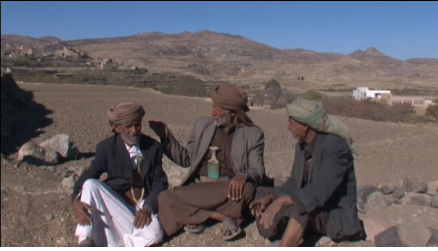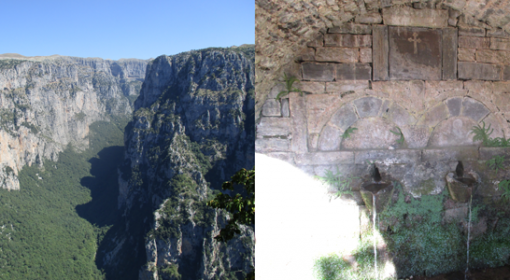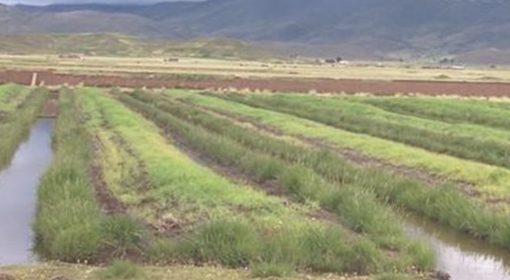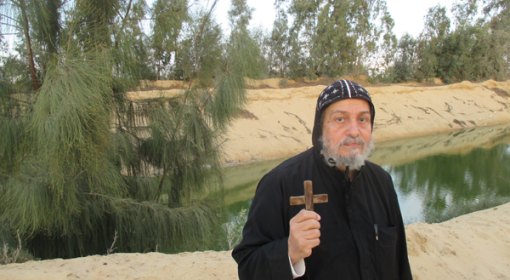Posted by Frank van Steenbergen
August 22, 2013

With low rainfall over a large part of the year and only small perennial streams, Sardinia – not unlike other islands – is highly dependent on groundwater. The geology is made up of karstic limestone, basalt and in some part granite. Wells, therefore, are not easy to locate and very precious.
 In ancient times, Sardinia times ran ahead of other societies in Europe. As long as 5000 years ago– that is Stonehenge times – a huge pyramid shaped altar was built in what is now called Monte d’Accoddi . Constructed in two stages, the altar has a remarkable and puzzling resemblance to the Ziqqurat of Mesopotamia that were built just a few centuries earlier. The Monte d’Accoddi pyramid temple is unique in Europe.
In ancient times, Sardinia times ran ahead of other societies in Europe. As long as 5000 years ago– that is Stonehenge times – a huge pyramid shaped altar was built in what is now called Monte d’Accoddi . Constructed in two stages, the altar has a remarkable and puzzling resemblance to the Ziqqurat of Mesopotamia that were built just a few centuries earlier. The Monte d’Accoddi pyramid temple is unique in Europe.
From 1700 BC a culture took shape in Sardinia called ‘Nuraghe’. The consensus is that the culture developed was indigeneous to the island, developed over many generations.
It left behind thousands of tower fortresses, elongated giant tombs, and necropolises with small burial chambers now called domo de janus (fairy caves). The hypothesis is of a tribal society carefully guarding its assets – good grazing land, small mines and water resources.
The religion of the Nuraghe centred around sacred wells and springs. Approximately 40 of these unique water sanctuaries are still left to wonder about (the table below is a small guide).
The sacred wells and springs all have a similar architecture. It consists of three parts. The first part is the atrium – the place where the devotees would leave their offerings, often with stone benches. The second part is the stairway to the well. In some cases (Santa Christina) this had an intricate trapezoidal stepped ceiling that would amplify the feeling of being drawn into Mother Earth. Finally, there is the inner sanctum: the well or spring itself – sometimes with a domed cover at the top that allowed the observation of the sun and stars. The entire sacred area was usually fenced off. The older water temples were made of rough stones but later ones were constructed from neatly chiselled stones – with increasingly finely worked decorations.
 With so many decennia having passed, archaeologists have been trying to reconstruct the water cult. At the wells and springs the Water God was venerated, a custom strongly linked to the Mother God. The presence of many votive items and large settlements just outside the perimeter of the water temples suggested they attracted many pilgrims. The water was believed to possess special powers – like blinding thieves who would wash their face in it but sparing those accused who were innocent. The water was also thought to give powers to those that had to enter into battle or special luck to those that went for a hunt. Its worship could help good harvests too.
With so many decennia having passed, archaeologists have been trying to reconstruct the water cult. At the wells and springs the Water God was venerated, a custom strongly linked to the Mother God. The presence of many votive items and large settlements just outside the perimeter of the water temples suggested they attracted many pilgrims. The water was believed to possess special powers – like blinding thieves who would wash their face in it but sparing those accused who were innocent. The water was also thought to give powers to those that had to enter into battle or special luck to those that went for a hunt. Its worship could help good harvests too.
The Nuraghe civilization flourished till 600 BC and was able to ward off several invaders. Its death stroke came with Carthaginians conquering the island, who were later succeed by the Romans. However, the spiritual power of the wells remained. 1500 to 2000 years later, some of the oldest churches in Sardinia were built at same sites.
For Nuraghe, and for many other cultures that believed in sacred wells and springs of well-being, groundwater was divine. Water was thought to possess special powers and to respect it was to respect life. With respect to groundwater, much changed all over the world in the course of a single century with the introduction of electric or fuel-run pumps. There was no longer a limit to what one could abstract.. With this new-found opportunity came fallen water tables and an underground drought in a big geographical band from North Africa to North China. There is an urgent need to rebalance and venerate groundwater, like the Nurraghe did, but then in our own 21st Century style.

Sources: (1) Paolo Melis (2003), The Nuragic Civilization. Carlo Delfino Editore; (2) SolarMegalith (2011), The water cult in Nuragic Sardinia Holy Well or Sacred Spring; (3) Fuvlio Lo Schiavo (1991), Il Museo Archeologico di Sassari G,A, Sanna, Carlo Delfino Editore; (4) Giulo Concu (2010), Guide to the Archaeological Sites in Sardinia. Imago Multimedia.
{jcomments on}




